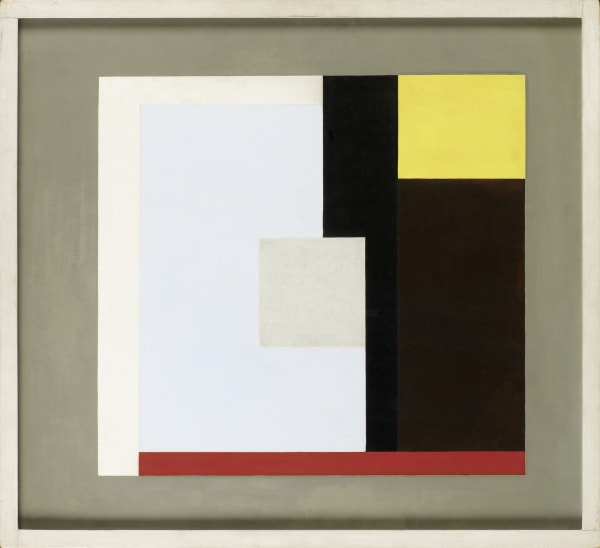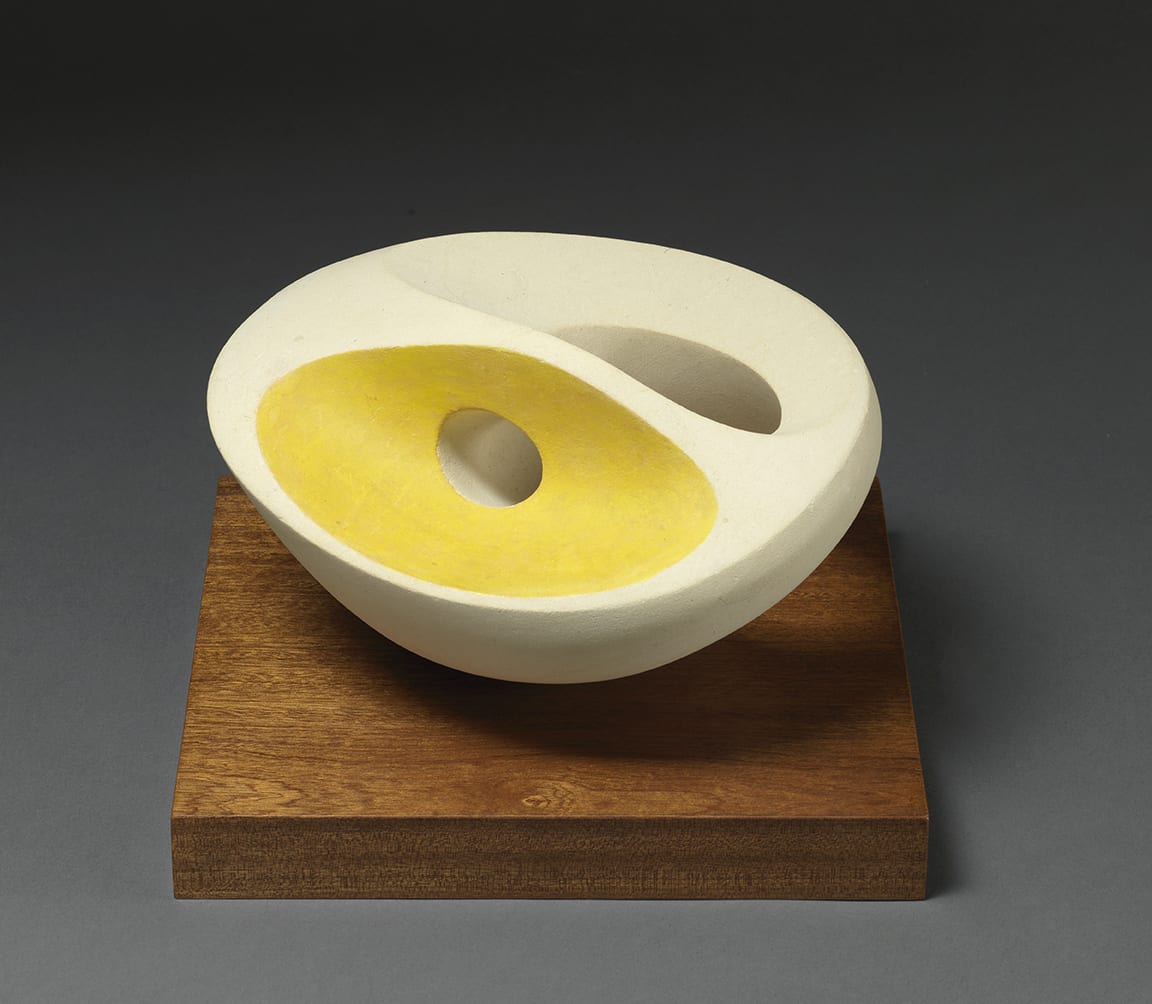In sculpture there must be a complete realisation of the structure and quality of the stone or wood which is being carved. … I believe that the understanding of the material and the meaning of the form being carved must be in perfect equilibrium.
- Barbara Hepworth
Barbara Hepworth (1903-1973) was a pioneering figure in the development of inter- and post-war British art. Her iconic Modernist sculptures are typically abstract or semifigurative forms carved from stone or wood. These often take aesthetic inspiration from the Neolithic carvings and stone arrangements that can be found in the landscape around St Ives, Cornwall, where she lived for many years. Her meticulous sculptural practice was orientated towards revealing profound inner forms and truths from the depths of her predominantly natural materials. The resulting artworks feel at once highly contemporary and part of a perennial sculptural continuum, imbued with immense physical and psychological charge. Hepworth’s works are often characterised by an organic curvilinear aesthetic punctuated by flattened expanses of material, holes, and intricate wiring.
Hepworth was born in Wakefield, a small city in West Yorkshire, England in 1903. She showed early promise as an artist and won a scholarship to attend the Leeds School of Art, West Yorkshire from 1920-21. There she met fellow student and sculptor Henry Moore, who would go on to be a friend and contemporary throughout Hepworth’s life. Following her time in Leeds, she was awarded another scholarship to study sculpture at the Royal College of Art, London between 1921 and 1924.
At the end of her time at the RCA, Hepworth was awarded a travel scholarship to study abroad. She used it to visit Italy where she met and married artist John Skeaping. They subsequently visited Siena, Florence, Rome, and Carrara, learning traditional local marble carving techniques. Hepworth and Skeaping returned to London in 1926 and the following year held Hepworth’s first exhibition of carvings in their studio flat. In 1928, her work was included in her first major public group exhibition at the Beaux Arts Gallery, London and then again in 1930 at Arthur Tooth & Sons, London.
1933 represented a major turning point in Hepworth’s life and work, when she divorced Skeaping and started a relationship with British painter Ben Nicholson (whom she had first met two years prior). 1933 also saw Hepworth and Nicholson travel across Europe together, meeting and/or visiting the studios of many of the most avant-garde artists of the period: including Constantin Brancusi, Jean Arp, Pablo Picasso, and Georges Braque. In 1935, they also met and became acquainted with the artists Piet Mondrian, Wessily Kandinsky, and Naum Gabo (with whom they would become very close in the following years). During this time, her sculptural work was gaining significant exposure within the art world and, in 1936, the Museum of Modern Art, New York purchased its first of her works: Discs in Echelon (1935). The following year, 1937, she had her first solo exhibition which was held at Alex. Reid & Lefevre Gallery, London – where she would show work regularly until 1952.
Just before the outbreak of World War Two, in 1939, Hepworth and Nicholson moved to St Ives, a coastal town in Cornwall, England which would be their home until the ends of their lives. They joined a burgeoning artistic community there which has since become known as the St Ives School. At its peak, the School included artists Patrick Heron, Roger Hilton, Peter Lanyon, and Gabo alongside Hepworth and Nicholson.
Hepworth’s move to St Ives precipitated a major development in her approach to her work. In 1945, she purchased her Trewyn Studio, where she would live and work prodigiously from 1950 until her death in 1975 – after which it became the permanent Barbara Hepworth Museum and Sculpture Garden, now part of Tate. Her move to St Ives (and subsequent artistic output) was followed by a number of museum solo shows and retrospectives, the first of which was at the Temple Newsam, Leeds in 1943 followed shortly thereafter by a show at the Wakefield City Art Gallery (travelling to the Bankfield Museum, Halifax) in 1944.
In 1950, Hepworth’s work was included in the British Pavilion at the Venice Biennale, alongside that of painters John Constable and Matthew Smith. That same year, the Tate acquired its first Hepworth piece: Bicentric Form (1949). Other institutional career highlights include major retrospectives at the Whitechapel Gallery (1954 and 1962), Tate Gallery (now Tate Britain) (1968 and 2015), and Musée Rodin (2019).




